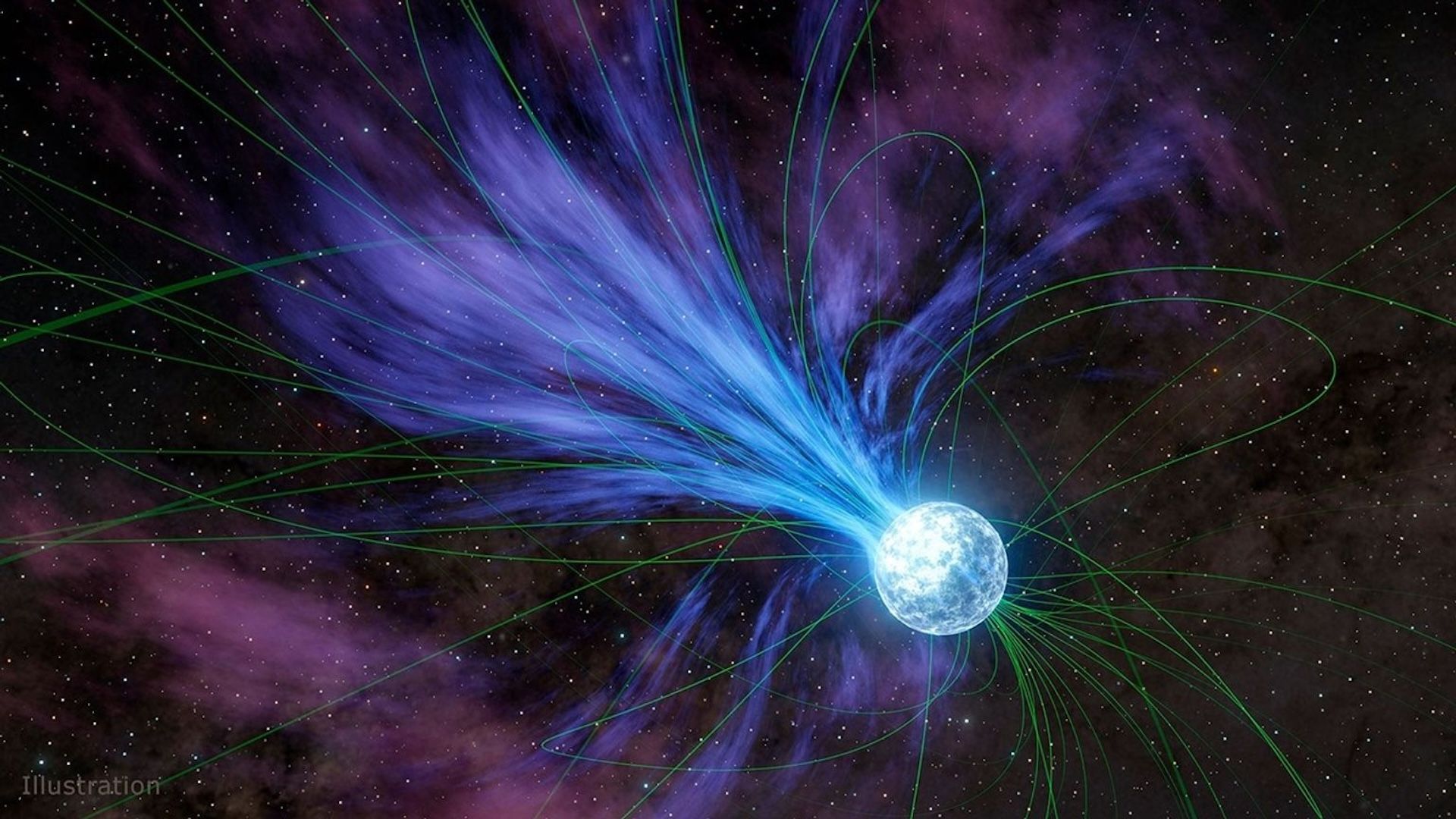Scientists May Have Unraveled the Origin of the Universe's Oldest Gold: A Century-Long Question Answered

Researchers might have at last figured out the origin of gold in the early cosmos.
In a recent study, scientists disclosed that intense eruptions coming from magnetars—a type of neutron star characterized by an extremely potent magnetic field—might have initiated the production of gold shortly following the Big Bang, much sooner than was formerly believed feasible. This research has been detailed in a paper published Tuesday (April 29) in The Astrophysical Journal Letters .
Scientists have often been baffled by the beginnings of the cosmos. vast amounts of gold Researchers were already aware that collisions between collapsed stars and black holes release heavy elements, yet in 2017, astronomers witnessed this phenomenon for the first time ever. fusion of two extremely dense stellar remnants known as neutron stars The massive collision, occurring 130 million light-years distant, released a burst of light carrying traces of heavy elements such as platinum and enormous quantities of gold.
However, the 2017 occurrence explained part of the universe's gold content, it failed to account for the formation of gold and heavier elements during the early stages of the universe, as insufficient time had elapsed for such events involving neutron stars to take place.
Currently, researchers believe they might have figured out how gold along with other heavy elements initially formed and spread throughout space.
'It addresses one of the major questions of our time,' said the study's co-author. Eric Burns , an assistant professor specialising in physics and astronomy at Louisiana State University, stated during a NASA interview. statement .
Related: The Hubble telescope observes neutron star collisions and explosions resulting in the formation of a black hole and the 'creation of atoms'.
Forged by 'extreme explosions'
Magnetars have been around since the dawn of the universe, and the researchers behind this study believe these entities might have played a role in producing up to 10% of all elements heavier than iron in our cosmos. Milky Way as stated in the document.
The scientists utilized two-decade-old information obtained from NASA and ESA observatories to uncover the concealed origin of gold and heavy elements within the cosmos. Their investigation led them to focus on magnetars as potential sources, guided by the outcomes they observed. 2024 study , which discovered that magnetar giant flares – eruptions of radiation emitted during "starquakes" – have the ability to propel matter, such as heavy metals, out of the crust of neutron stars and into space.
The most recent magnetar giant flare detected on Earth occurred in 2004. At that time, scientists picked up a minor gamma-ray signal from the flare but were unable to comprehend its origin, as mentioned by Burns.
It transpires that this minor signal matches what scientists anticipate observing when a magnetar generates and ejects heavy elements during an enormous eruption.
Giant flares from magnetars release vast amounts of high-energy radiation, potentially serving as the crucial process for creating gold and other heavy elements beyond iron, as suggested by scientists. The researchers behind this recent study propose that the extraordinarily dense concentration of neutrons within such a flare might convert lighter atomic nuclei into significantly heavier ones, prompting numerous simultaneous nuclear decay events within individual atoms.
Protons and neutrons within atoms define an element’s identity and mass, respectively. Hydrogen stands as the most basic atom on the periodic table due to possessing just one proton. Following this, helium, being the next simplest element, contains two protons; lithium follows with three, continuing in this pattern.
Under specific circumstances, atoms may take in an additional neutron, thereby increasing their mass and making them unstable, leading to a nuclear decay process where the neutron transforms into a proton. This event causes the atom that gained the neutron to have one more proton than before, altering its chemical nature and shifting its position on the periodic table. For instance, hydrogen turns into helium, helium evolves into lithium, and so on.
A magnetic giant flare hosts an intensified version of this phenomenon, as the high concentration of neutrons allows atoms to capture multiple neutrons simultaneously, the researchers found. Consequently, a lighter element might abruptly change into a significantly heavier one, resulting in the swift creation of heavy elements such as gold.
It’s incredibly fascinating to consider that some of the components in my phone or laptop were formed during these intense explosions throughout the history of our galaxy,” said the study's lead author. Anirudh Patel , a PhD candidate in astrophysics at Columbia University in New York, stated in the announcement.
The subsequent step for the researchers involves searching for additional hints within historical magnetar giant flare data. When launched, anticipated in 2027, NASA’s Compton Spectrometer and Imager (COSI) mission will build upon these findings. As a broad-field gamma-ray observatory, COSI aims to investigate powerful events across the universe such as magnetar giant flares.
If you enjoyed this article, click the +Follow button at the top of the page to stay updated with similar stories from MSN.
Comments
Post a Comment